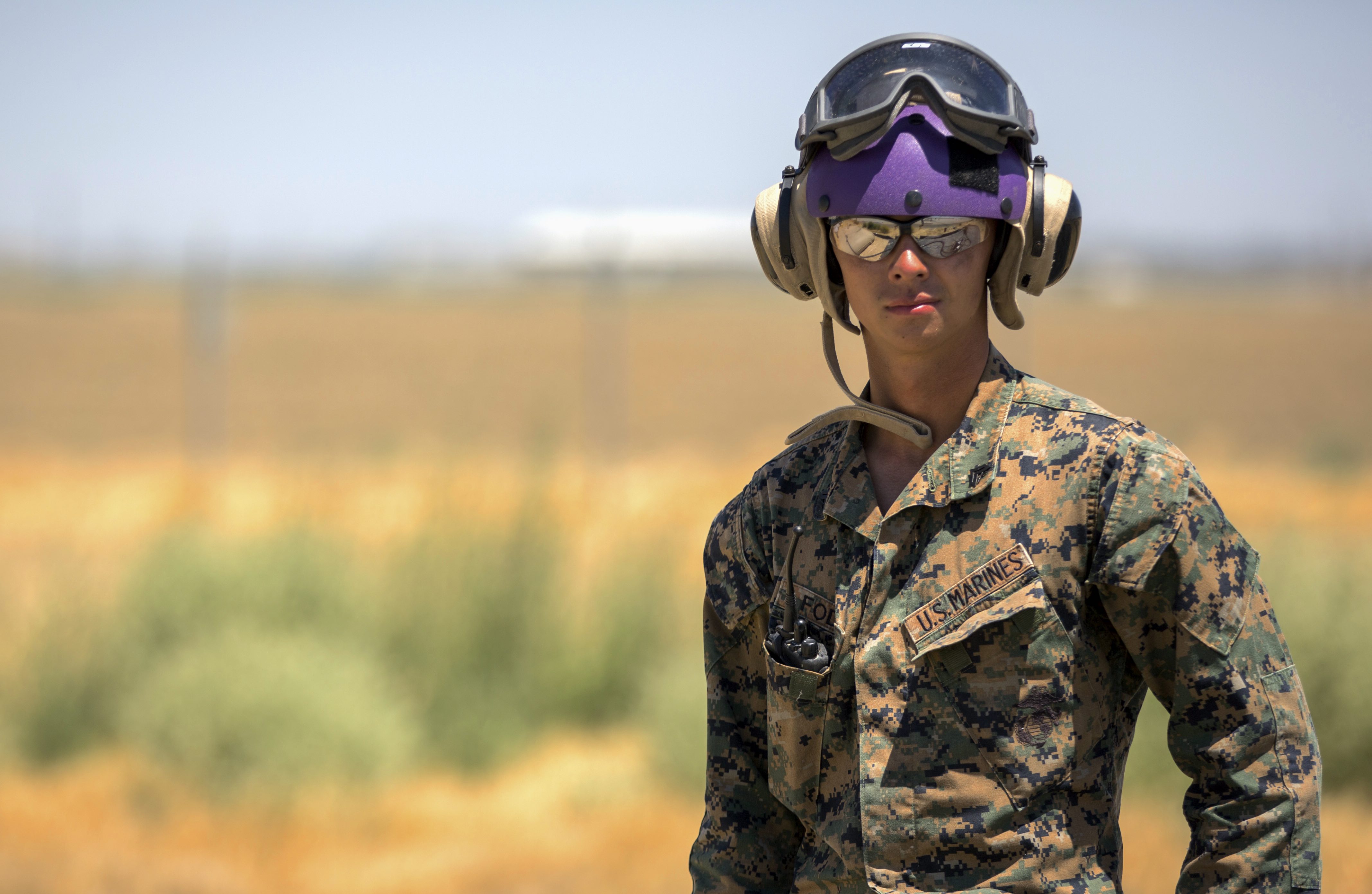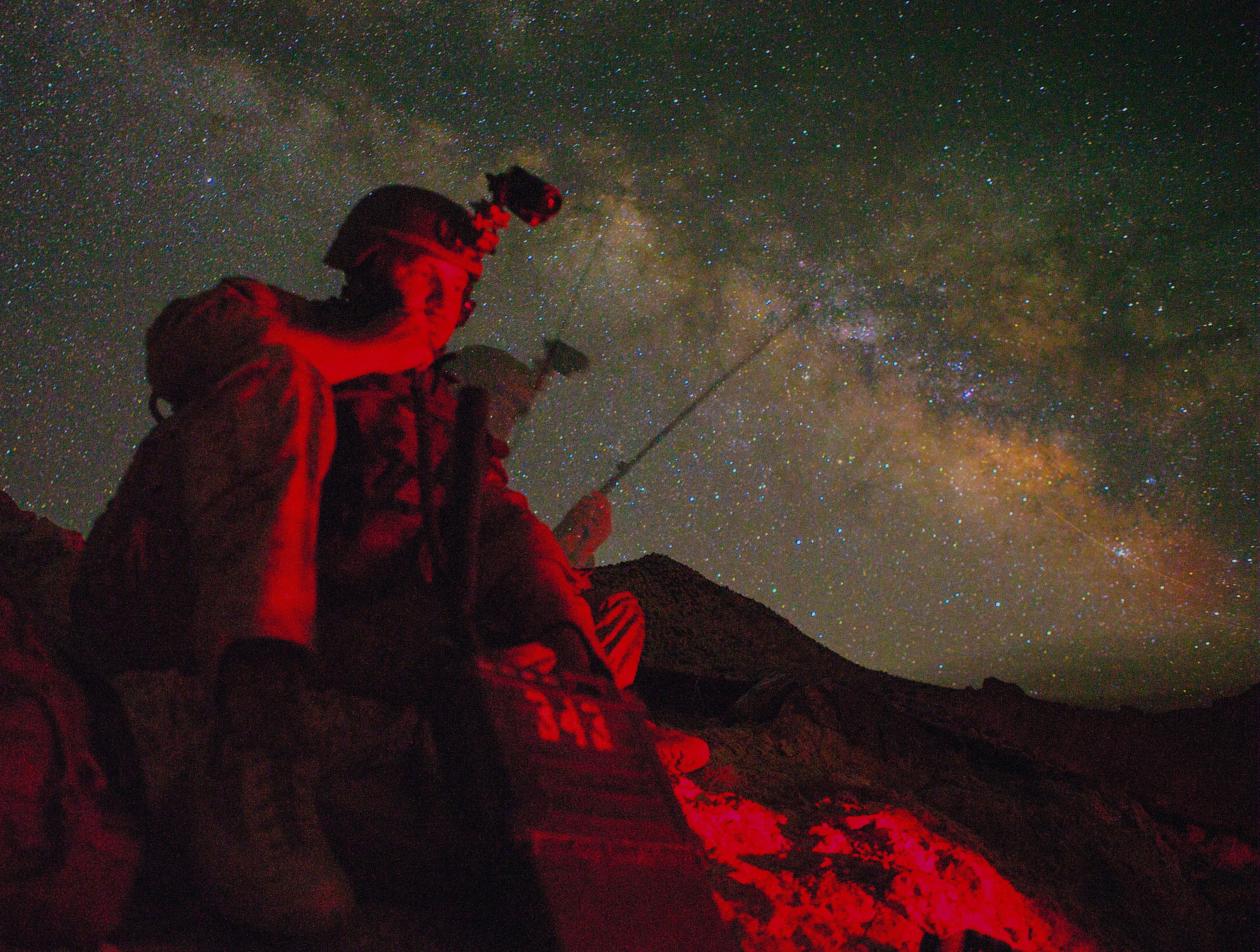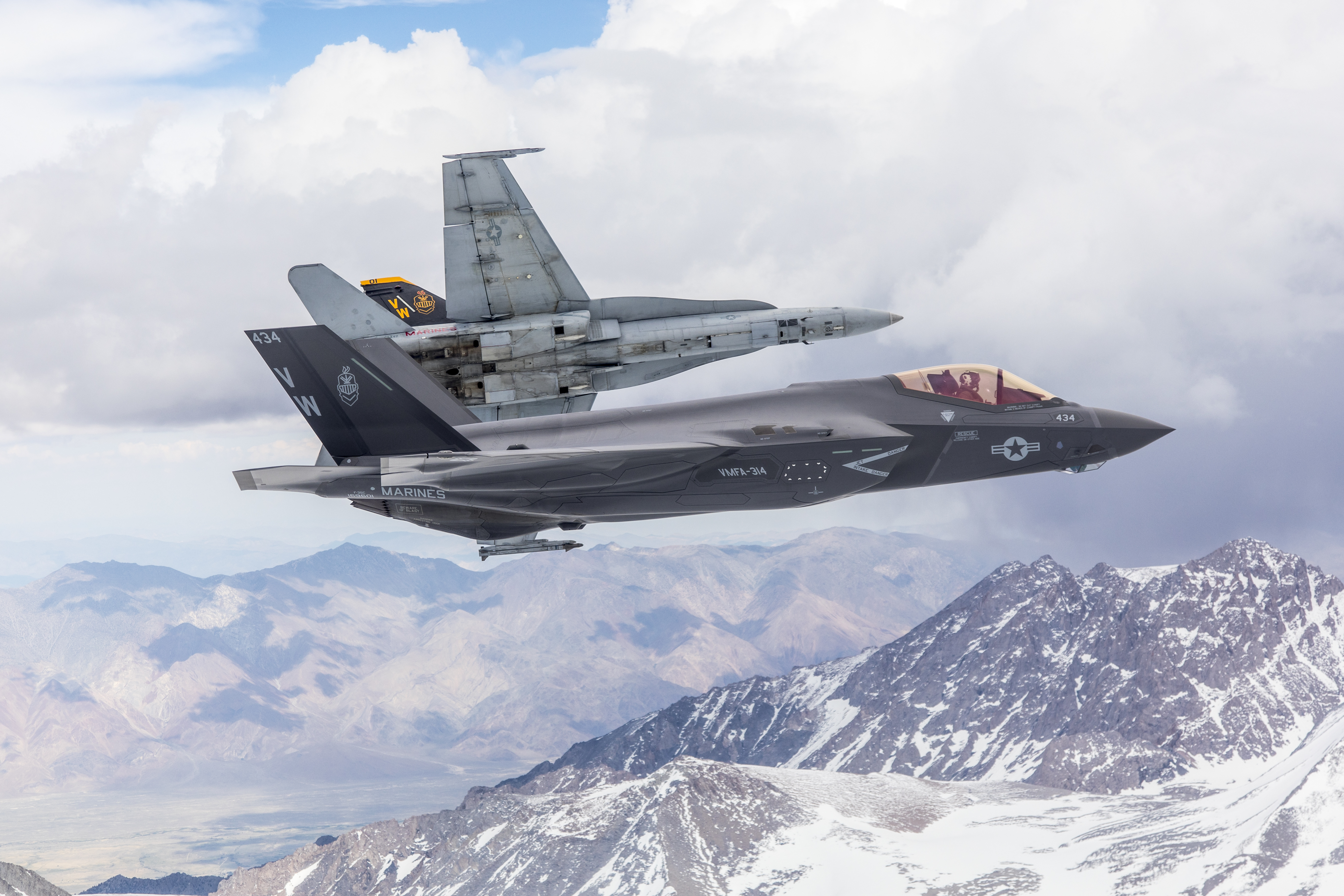
In the Marine Corps’ new concept of expeditionary advanced base operations, its forces disperse light, agile units with a small footprint over a wide area while working jointly with naval forces to counter and fight a credible enemy threat in a multi-domain contested environment.
To prepare for that real-world mission, disparate squadrons and battalions that often don’t train together must integrate to exercise as a Marine air-ground task force (MAGTF).
Last month, 17 squadrons with San Diego, Calif.-based 3rd Marine Aircraft Wing joined with 1st Marine Division and 1st Marine Logistics Group units for exercise Summer Fury 2020, held over three weeks across Southern California and southwest ranges.
The large-scale exercise had two goals: deploy an integrated MAGTF to conduct expeditionary advance base operations (EABO), and “increase aviation operational proficiency with realistic, relevant training to ensure the Marine Corps’ largest aircraft wing remains operationally excellent, interoperable, deployable on short notice and lethal when called into action,” the Marines said in a statement. This year’s training scenario simulated operations across an expansive island region like the Indo-Pacific.
The 3rd MAW pushed fighter jets, helicopters, Marines and combat equipment hundreds of miles, from Marine Corps Air Station Miramar and Camp Pendleton north of San Diego to Naval Air Station Lemoore and China Lake Naval Weapons Station farther north in California and Marine Corps Air Station Yuma in Arizona. Aviation ground support Marines set up a series of forward arming and refueling points, or FARPs, to support the aircraft, and heavy-lift helicopters moved artillery guns – all missions that helped project combat forces and stretch the MAGTF’s operational reach.
“From there … you’re penetrating into badness,” the wing commander, Maj. Gen. Christopher Mahoney, said in a recent interview at his MCAS Miramar headquarters. “How are you going to exploit that distance? You exploit with adapting your capabilities and being quick about it. So get in the door when they ain’t looking – and then go. And then ultimately, in our business, you’ve got to destroy something.”
“You exploit, whether it’s distance, whether it’s the electromagnetic spectrum, whether it’s penetrate the geo-political environment,” Mahoney said. “Then you need to destroy – in most cases – and that’s what we do.”
Mahoney, a veteran pilot who most recently served as deputy commander of U.S. Forces Japan, took command July 24 from Maj. Gen. Kevin Iiams as 3rd MAW was shifting to the final phase of exercise Summer Fury, which culminated with a long-range strike.
In that strike mission, F-35C Lightning II Joint Strike Fighter jets flew from a simulated aircraft carrier and joined other aircraft – including F-35Bs, F/A-18 Hornet strike fighters and AV-8B Harrier attack jets – to hit enemy targets hundreds of miles away.
The F-35Cs with the “Black Knights” of Marine Fighter Attack Squadron 314 were joined by F/A-18C Hornets with the “Red Devils” of VMFA-232, F-35Bs with the Yuma-based “Flying Leathernecks” of VMFA-122, and AV-8Bs with the “Tomcats” of Marine Attack Squadron 311. Three KC-130J Super Hercules aircraft provided in-flight refueling for the 16-aircraft strike package, which also got support from two contracted KC-707 tankers, according to 3rd MAW.

On the ground, Marines with Marine Wing Support Squadron 372 and Marine Air Control Squadron 1 established FARPs at Lemoore and China Lake, providing valuable logistics to the wing and other MAGTF units.
“It was less than 12 hours to set up the full array of tactical airfield fuel dispensing and the ability to safely arm the airplanes,” Mahoney said. “We proved we could do it quickly and safely and do it operationally. … It’s all the little things that you have to do to exploit.”
A simultaneous mission had Marine Corps rotary-wing attack helicopters doing live-fire missions with Navy MH-60 Seahawk helicopters. “That talks to the close-in fight. It talks to the gray-zone fight, if you will, and certainly naval integration,” he said. “They’re exchanging data. They did simulators together, they did academics. … So that was really cool to see.”
With the exercise, “(we) put that all together and see how we do it – what pace can we run at, how far can we go, how tired are we when we get there,” he added. It provided “not only an increase in readiness but also a self-check on are we to the level that we thought we’d be at, and what do we need to do to go beyond that.”
Mahoney likened Summer Fury to “getting the band together. In individual training, they’re going to have to communicate and have to understand what’s going on with the left and right of them in order to put that stuff together in short order.”
And with after-actions reports come important questions. “I want illumination down to the nut-and-bolt detail of inserting FARP and EAB capabilities. What do we need to bring, how much of it, how quick can we get it up and running? Then what do we do with it, and then how do we get it out?” he said.
“That crystalline level of detail is what I’m after,” he added. “I believe in certain elements of Force Design (2030), the warfighting concepts that we’re taking on. Those things will be the things that are decisive to success or failure at a tactical level. If you can’t do command-and-control, then you can’t sustain it.”
Mahoney said for follow-on exercises, “I’m going to build on this and up the realism so it won’t be that easy for them to get to where they’re going. I’m going to put stuff in the way. Make them think about it, make them refine their unit training so that they will adapt in their unit training to be successful in the collective.”
Drawing on unit training

On any given week, fighter jet crews zip through the skies honing their core missions, like air-to-air combat or suppression of enemy air defenses, during routine squadron training. Sometimes, a crew is called to provide close-air support for infantry Marines and other ground-based units sharpening their own warfighting skills.
“Everybody is used to flying with the same type of aircraft that you always fly with. But when you integrate with other assets, that’s more of what it’s like on … deployment,” said Maj. Robert Ahern, an F-35C pilot and VMFA-314’s quality assurance officer.
During Summer Fury, with traditional strike missions and close-air support for ground forces, “we were just a very small piece in a very large picture. So to get exposed to that and do that in a training environment is really valuable not only for new pilots but for guys like me … seeing how we affect the picture differently, seeing how it’s going to shift things around,” said Ahern, a former F/A-18C pilot.
“It’s also integrating the ground units and having them not only see what we do in the fighter or the attack mission but also be an integral part of the planning and the execution, something that we almost never get to do in training. We do it all the time in combat operations,” he added. But “oftentimes we are limited in the type of training that we do. It was a great opportunity to do all of that.”
Long-range lethality

The fifth-generation F-35s that led the long-range strike helped bring the threat level down for follow-on forces. “We have the ability to find and strike targets that other platforms can’t,” Ahern said. “So when you have an integrated air defense that is going to threaten Hornets or Harriers or anyone else you have out there, (F-35s) can go forward and operate in that environment, and now the rest of the assets can pull forward and operate in a low- to medium-threat environment where they’d normally fly.”
The long-range strike isn’t one the squadron often gets to do, he noted, especially in a scenario “simulating where we have a forward runway or island with fuel and other logistical support and extending the reach beyond that provided by an expeditionary or naval strike group.”
“For us, the big focus was what did we learn? How can we replicate this for the future? What are we moving forward with?” he said. It wasn’t just about focusing on flying the F-35C but wider considerations such as the fuel farms and transport required to support expeditionary refueling, he said.
“Even just the coordination to get people where they need to be even stresses the system,” he added. “So when you have a challenging mission like that, what you learn is what works well and what doesn’t, and you’ve got to find the gaps in your system so that you can go back and make them better. … There’s a lot of moving parts, and we want to make sure we maximize the available training.”
Ahern, who did a tour as an air officer with a Marine reconnaissance unit, is mindful of how the flying squadrons supported ground units’ missions and ultimately affect the big picture. Such integration “gets you to think about commander’s intent. At the end of all this, what is the desired end-state. … How do I get there?” he said. In the long-range strike, “everybody has enough of the picture to understand how they fit into it. It’s a difference in understanding how to win. You have to know what that desired end-state is, what that commander’s intent is.”
“As changes come…you have to flex the backup plans,” he added.
At one point on the long-range strike, Ahern said, an F/A-18 crew had “a comm issue and they couldn’t talk, so they had to quickly leave, fly back to Miramar, get that fixed, then took off and rejoined the fight. But there was enough flexibility built into the timeline. This happens in real-world, too…, and you have to make quick, real-time assessments.”





